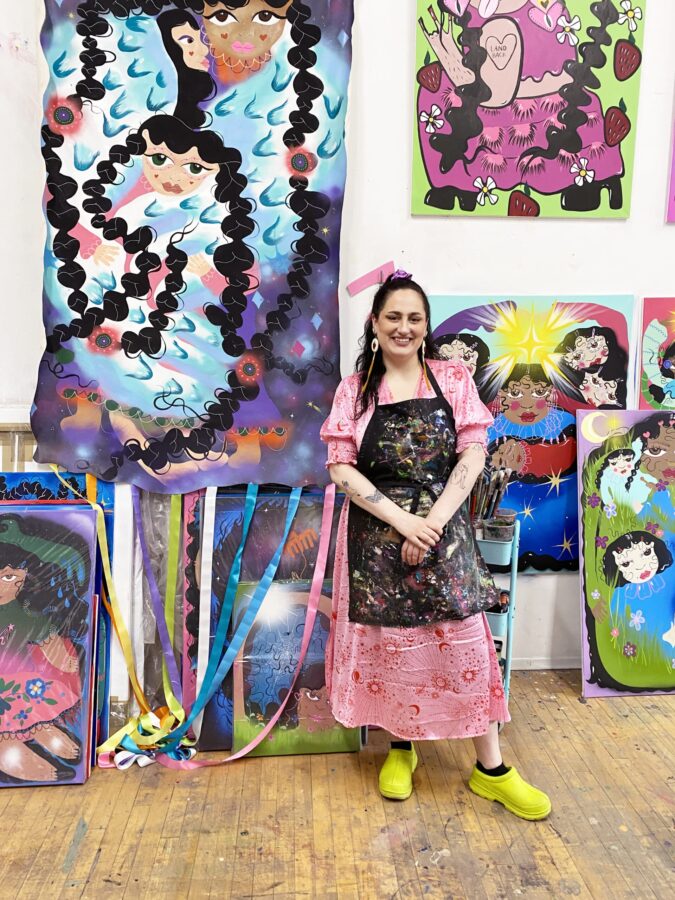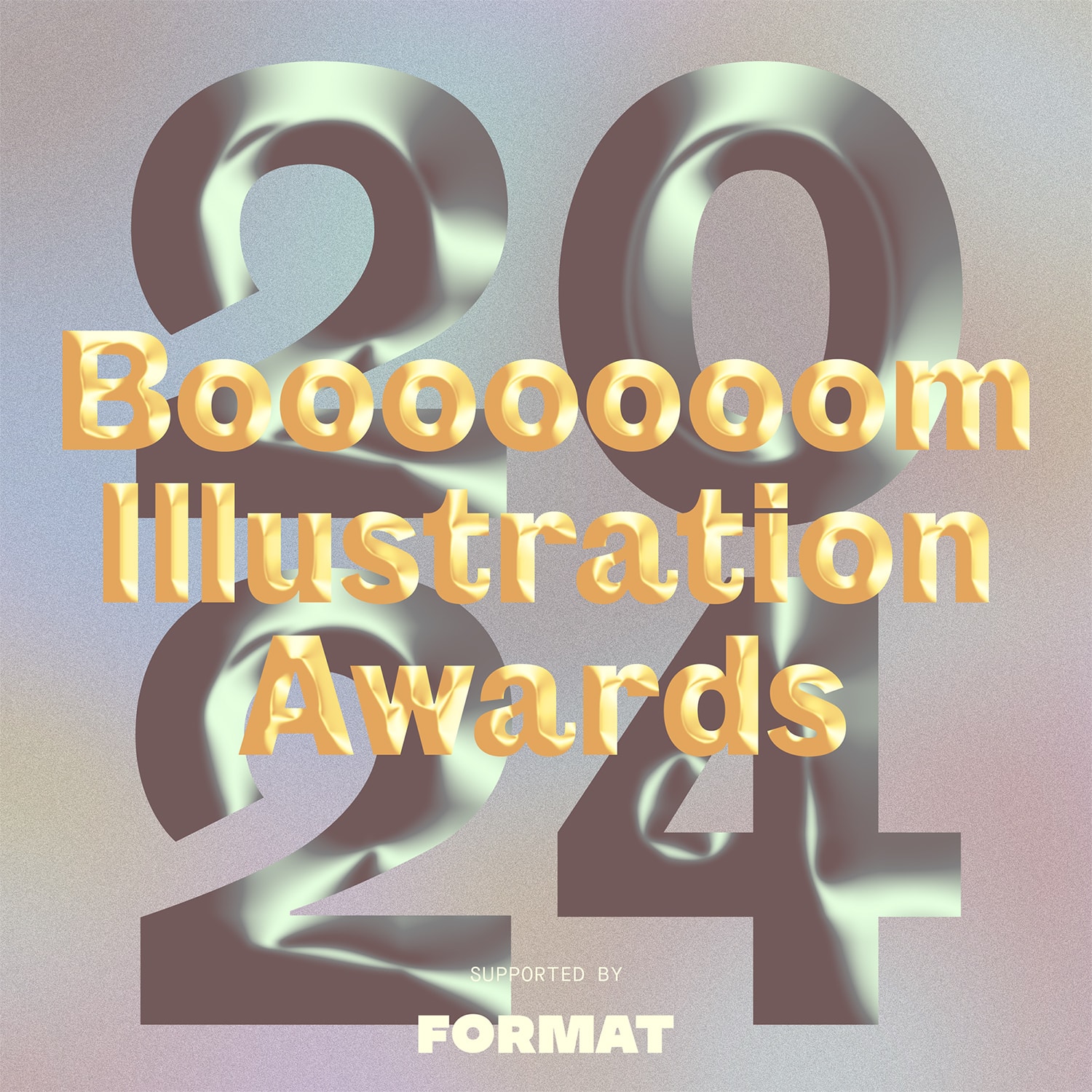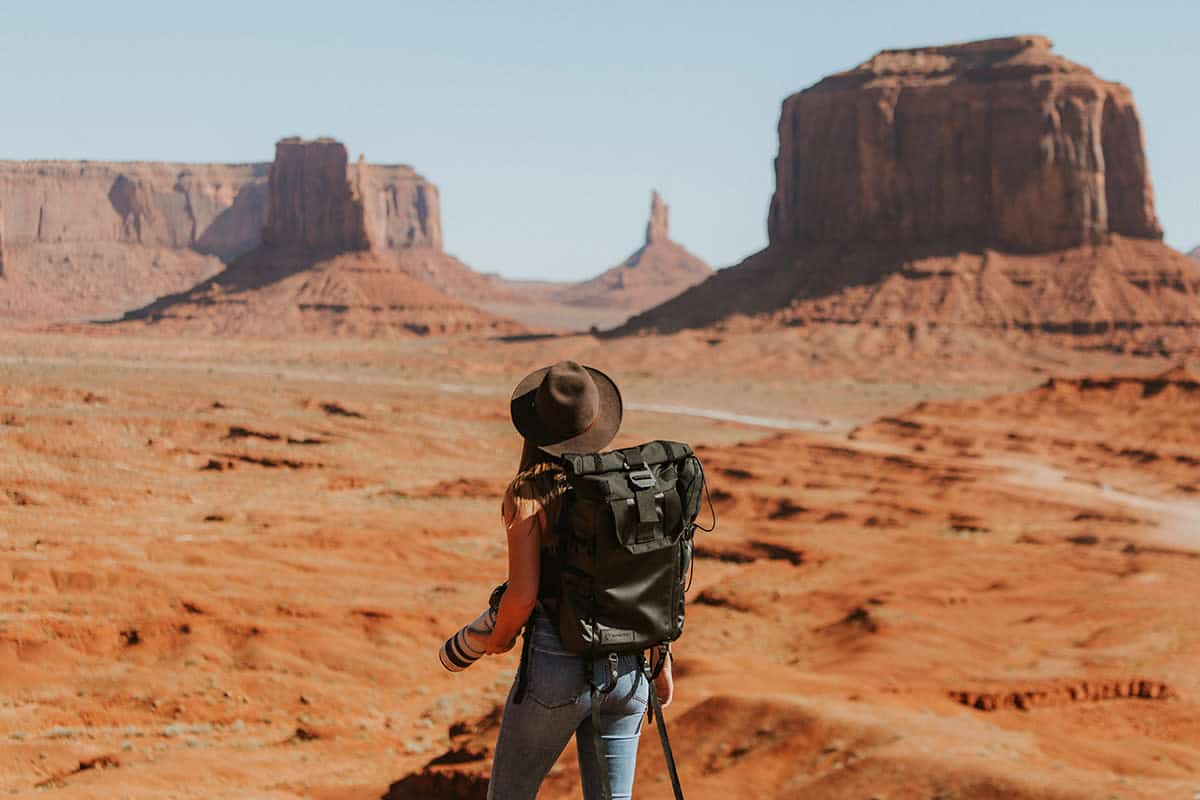Can you introduce yourself and your work?
Aaniin, my name is Natalie King. I was born in Newmarket, Ontario, and my family is from Timiskaming First Nation on my dad’s side. I sit with the Bear Clan. I currently live in and work in Toronto and have been here for about 9 years. I work independently as a professional artist while also working with Xpace Cultural Center as a Programming Coordinator.
I’m Algonquin Anishinaabeg. So in my work, I’m reflecting a lot on star stories, reflecting on past, present and future. I have an interdisciplinary practice that ranges from; video, painting, sculpture installation, as well as community engagement, curation, and arts administration.
How did you get started in art and what led you to this path?
From childhood onward, I was really drawn to the arts, really, really young. And I found myself happiest and the most joyful when I was making something or creating. Luckily, both of my parents encouraged me to make art. There was a lot of respect that my parents had for artists and so they really wanted to foster that in me as a young person.
I hated school. But I always felt super at home in art classes. And also as a marginalized person, I think it’s super important for us to have spaces where we feel seen. So for me, those art spaces were always the space that I felt the most creative and happy. And then as soon as I started making work in a more serious way I found that creative flow–when you get lost in making work or you enter that sort of flow state. For me, that was something that really also helped my mental health. So my journey is tied to: having parents that were supportive, loving being in art classes, loving making art, and then also being drawn to that flow state of just dreaming, creating.
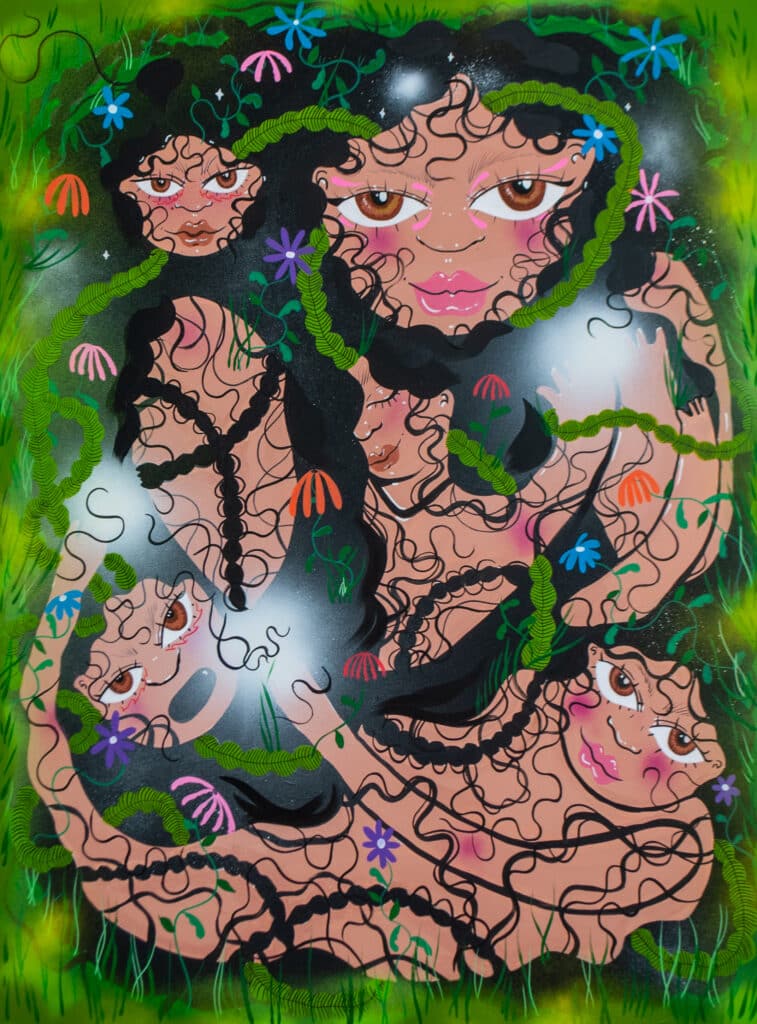
You can see that sense of flow in your work. There is a lot of movement in the scenes and bodies.
Yes, there’s a lot of bodies that sort of float through space. In my culture as an Algonquin Anishinaabeg person, a lot of our decision making comes from our dreams. And so dreams also play a super important role in my work as well, as well as star stories. So what I’m trying to do is contextualize that, to show that.
There’s the western view [of dreams] that we’re unlocking something outside of our experience. But, in Indigenous cosmology dreams are not seen as something that’s different from you. Dreams are a part of you. They’re seen as a message from your ancestors. So it also ties you to your bloodline. I think in Western, specifically, settler colonial society, it’s not seen in the same way or it’s not given the same respect or value.
I always had dreams as a child of making art. And so I also think that maybe that was a way for me to self soothe, because I struggled a lot with anxiety and stuff as a kid. I think it might have also been a message for me to be like–“You should do this, this is a part of your healing.”
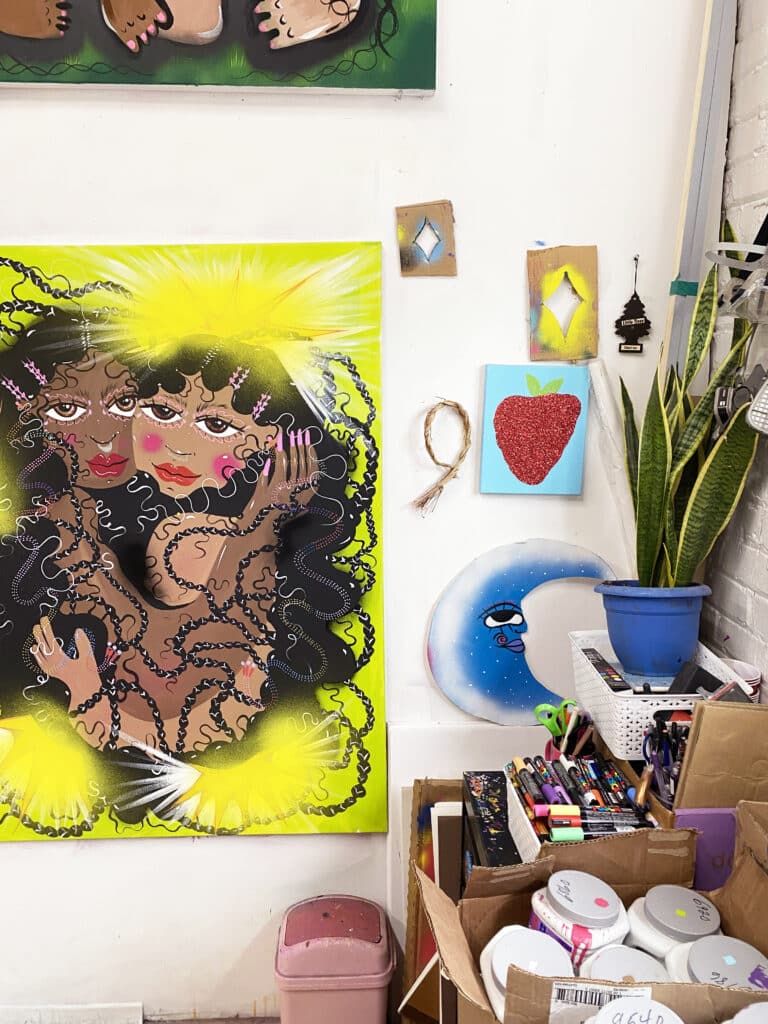
Where did you go to school? How did your formal training impact your artwork?
I started school at Georgian College in Barrie, Ontario. They had an arts program there, which was really, really cool because it gave you experience in all kinds of mediums to work with. There was an opportunity for me to learn: how to weld, create sculpture, printmaking, painting and drawing. There was a heavy focus on experimenting with all kinds of mediums and it was super hands on, which I really, really loved.
Then I started at OCAD (Ontario College of Art & Design) University in 2015. I was in the Drawing and Painting Program and then I graduated in 2018. There were many starting points to my career but I would say I wouldn’t have gotten where I am now without the people that I met at OCADU. When I started at OCADU I was super young, I had just moved to the city. I didn’t know anybody. OCADU helped me make a lot of connections to the Toronto art community. It was nice being surrounded by people who were also queer, who were also working in ways that I felt were really exciting at the time.
The same year I was in my thesis [at OCADU] actually, I had lost my brother. And I made for the first time, a figurative painting, which was different from what I was working on at the time. It was the first time I had made a large painting that was specifically working in conversations or narratives around figures. It was personified figures of my sister, my brother and me in this sort of garden, in the land. And it was one of the first times where I was like, whoa–wait a minute–I feel something, something strong pulling me in this direction. It wasn’t until that piece that I thought: “Oh, now I’m telling a story, from my point of view that nobody else can tell.” From that point I started to develop my style of figures.
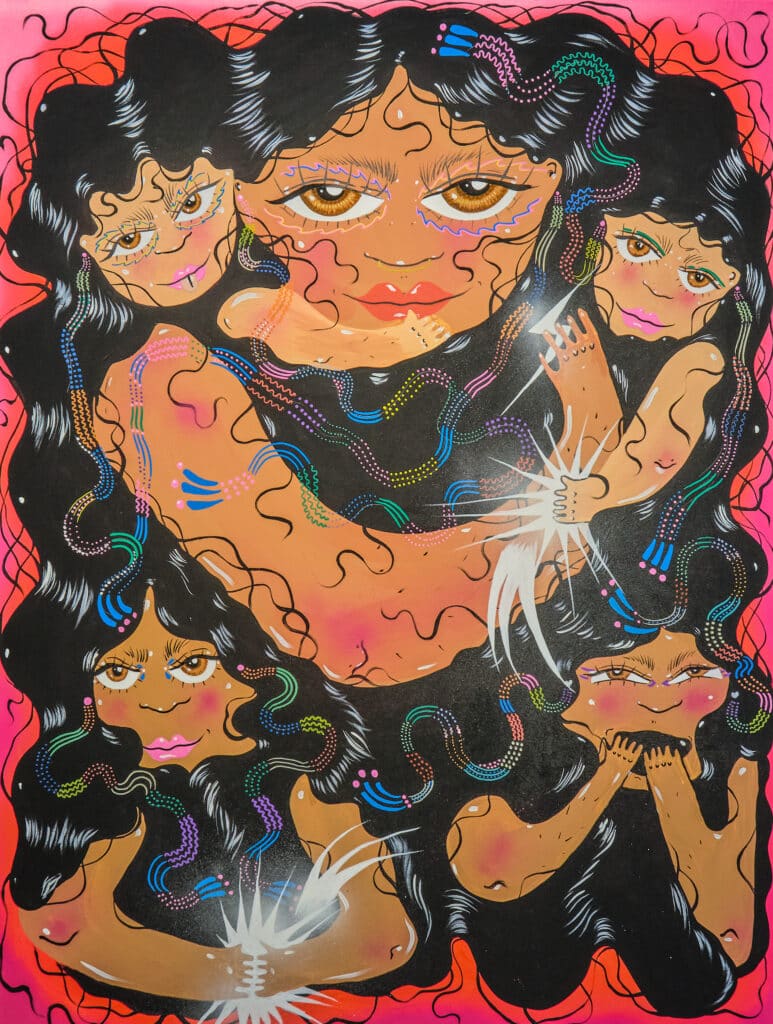
Can you talk about the impact Indigenous mentors have had on your practice?
I took a workshop with Toronto Queer Film Fest, and that was when I started working with video. And I got to work with TJ Cuthand. He’s an amazing trans Indigenous artist who has been making work since the 90s and beyond. And taught me how to use a camera and how to use editing and showed me work from so many other queer Indigenous artists that I don’t think that I was familiar with at all.
Before that, I grew up in a very small town. I grew up in a place called River Drive Park. I say Newmarket, because that’s where I was born. But I actually grew up in a place that was three streets and a bunch of cornfields. I had my family, who was Indigenous. My dad’s family is really big. He has 20 siblings and then they have children. So while I had this big family community, I was not finding other queer people that were in my orbit at that time. It really wasn’t until I moved to Toronto that I actually started making those connections and meeting those people.
But even within a community like Toronto, it can still be hard to have that sense of community. Only now, in 2023, is the city hosting its second two spirit powwow. After the first one I talked to a lot of queer people–other queer Indigenous artists–and they’re just like “wow, that was one of the first times that I’ve seen so many other queer Indigenous people in the same place”. I feel that was one thing that I felt I was missing for a long time. And now that I’m a little bit older, I’ve had the time to make those connections.
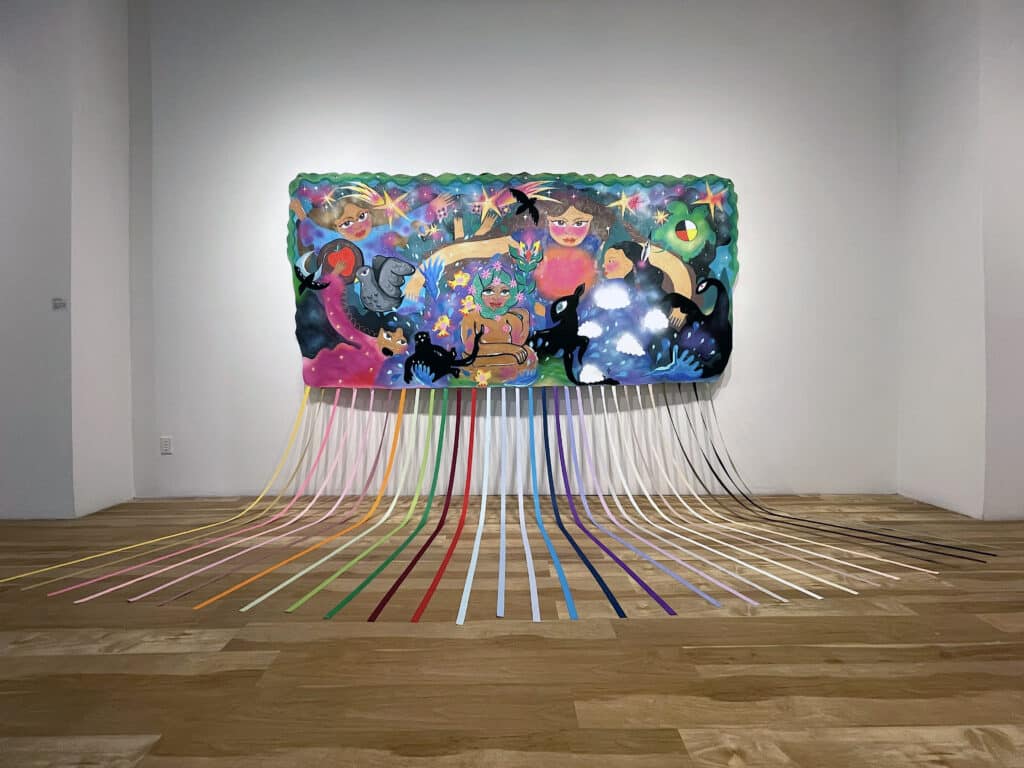
Looking at your work, there are some consistent imagery of: bodies of color and bodies that are queer/femme in concert with magical or fantastical elements. Can you tell us about these images, their importance to your work?
I want my work to be as open and accessible as possible. I love the idea of things that glow or sparkle or pop. I like the idea of disarming viewers. I think I’m focused on queer joy, Indigenous joy. But I also want people to reflect on the project of colonialism. I want people to think about how much it takes to make these images and draw from that joy when there is so much that is meant to destroy us. I started making work around the fact that I view LGBTQ+ people as leaders and I really wanted to highlight that we deserve respect and sovereignty and power over our own bodies.
I started thinking about the ways that we transform not only thoughts about gender and family, but also the ways in which we are insightful and we have a lot to say in terms of the way the world works. I wanted that to be a highlight or a takeaway.
For me, a big part of the idea is that these bodies [in my paintings] are full, they’re taken care of, they’re taking care of each other, they’re existing together in harmony. As queer bodies–queer Indigenous bodies–they have full sovereignty over themselves. They get to choose their family structures and they have these rich, fruitful lives. And so for me it’s–maybe we don’t have that now, but it’s a speculation of what it would look like if we did.
My works are a mixture of fantasy and reality in tandem. And what does it mean to have all of our intersections held and respected? These bodies are meant to represent that.
Natalie Laura King
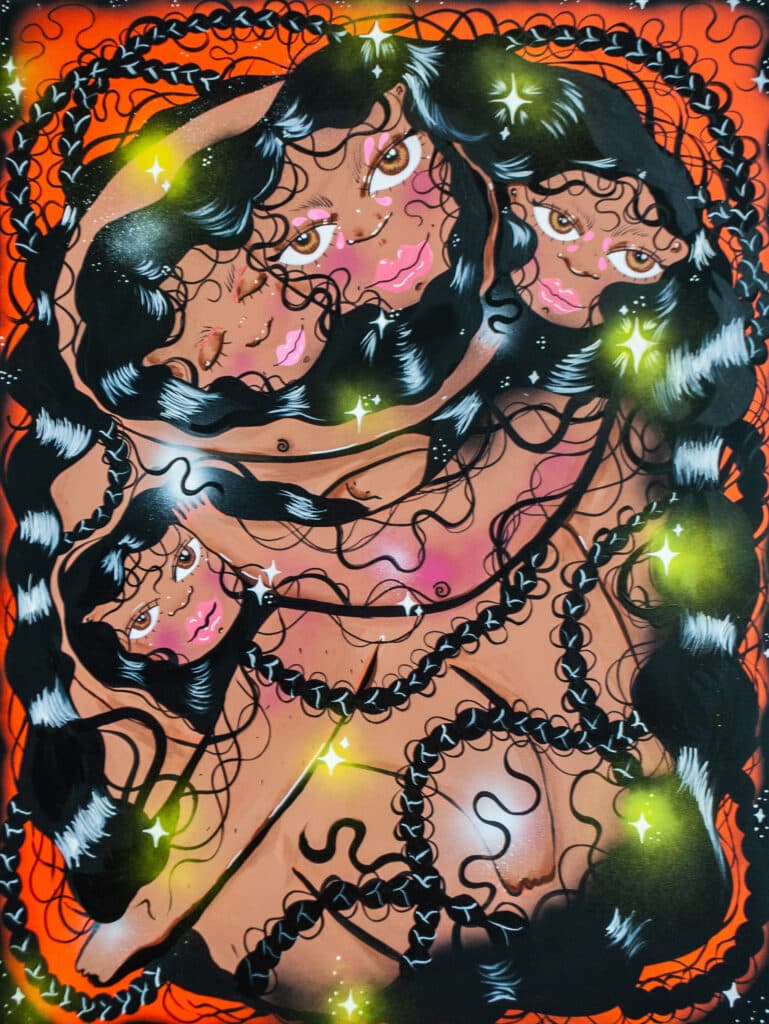
My works are a mixture of fantasy and reality in tandem. And what does it mean to have all of our intersections held and respected? These bodies are meant to represent that. I wouldn’t say they’re particularly male or female, although a lot of them are feminine coded. I would say that they represent a queer femininity, which often exists outside of traditional gender roles of men and women. So these people exist in a world where those anti-colonial, niche ways of holding space for two-spirit and queer people that were so important then before the project of colonization are now having this space to flourish in these speculative futures.
I think to myself what would it look like for me as a queer indigenous person to see these images as a child. What would that experience have been like if I saw these then? So to me it feels consequential because of that. It feels important or urgent because of that. And I just think about little Indigenous girls and how they see my work. And I think a lot of kids are super drawn to my work too, which is also exciting.
First and foremost, my work has to be enjoyable for me to make. Because, if I’m not enjoying the process, then I feel it takes the joy out of the work. I try in my practice to specifically focus on joy. Yes, there is trauma, and there are so many things that make it so hard for us to exist, but I’m also trying to think about what does freedom look like? And so these are an extension of those thoughts and feelings and ideas toward freedom.
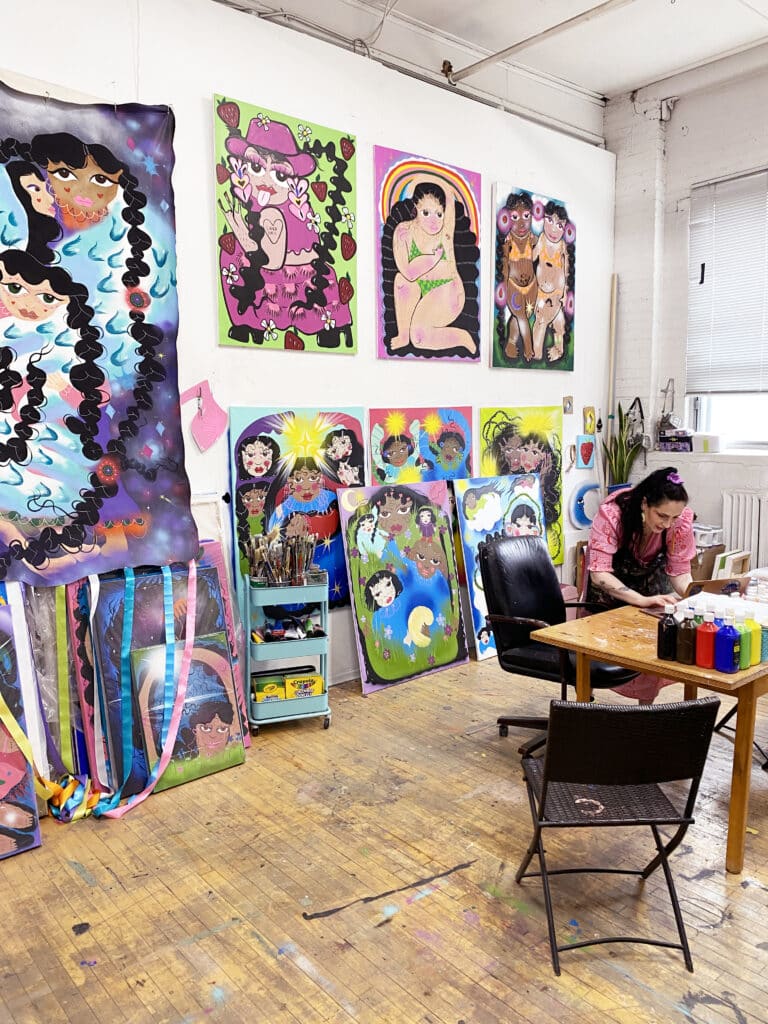
How has using Format impacted your practice?
I started using Format as an undergrad and because I wasn’t super familiar with coding. For me it was a super easy, hands on, intuitive way to do what I wanted to do with my art practice. I’ve been using it since and I’ve been able to set up a store. Everything is super easy. I’ve been able to tweak my website over time and sort of build a brand or however you wanna say it. Yeah, I love it. I love it. It’s awesome.
What advice would you give to aspiring or emerging artists?
Take care of yourself. Most importantly, and above all else, your health and mental wellbeing are the most important thing. In terms of my art practice, the key for me is patience and empathy with myself. Focusing on goals, on your goals, but not being hard on yourself when setbacks occur, because they almost always do. For me it was about finding the joy.
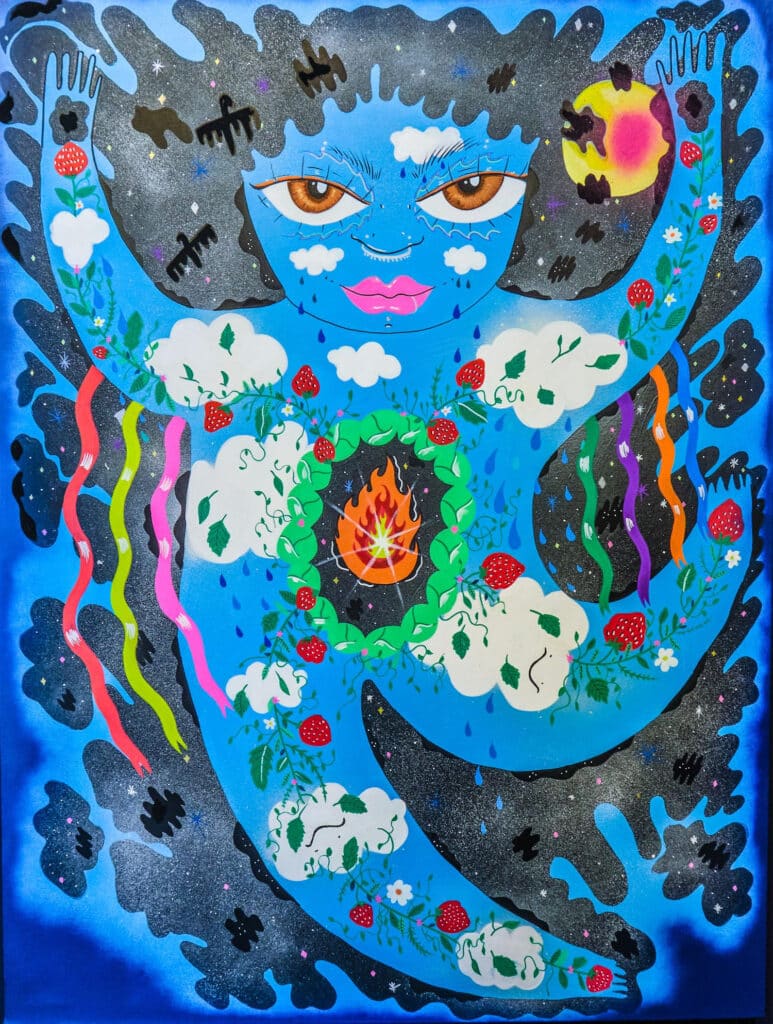
What’s on the horizon for you?
Continuing the work I am doing at Xpace, expanding the existing skills and supporting emerging artists. I’m also creating my own works and developing and continuing to learn within my studio practice. I have some exciting group and solo shows and residency opportunities in the future. And I hope that I can still foster community and connection and mentorship and support while also expanding my arts practice. I have a few exciting things coming up this year.
Next year I’m doing a curatorial residency for Gallery TPW. I’ll be working with other queer two-spirit, trans, and Indigenous artists creating a resource that will be used for queer Indigenous youth, which will be shared in January 2024. I’m also curating an exhibition at Xpace Cultural Centre, which is opening May 26th, 2023. And then I have a few group and solo shows coming up the end of this year into next year. So yeah, a lot of exciting things and hopefully for me making those connections. I think making meaningful connections with other like-minded people and other people is always just the funnest part to me.
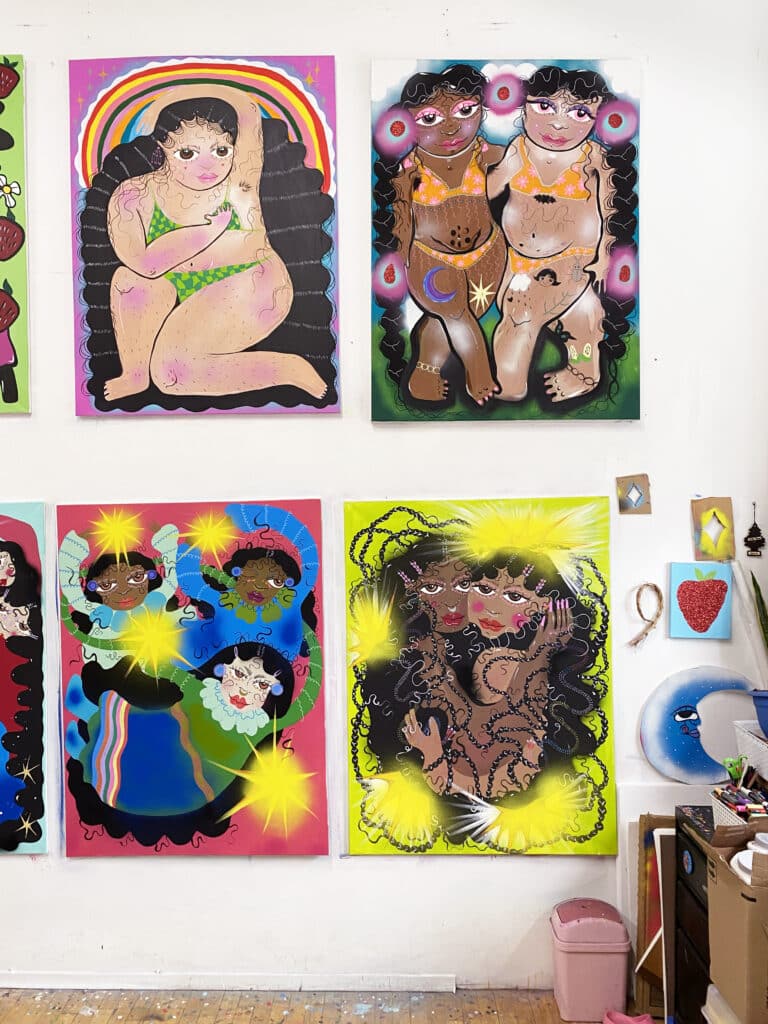
Where are your shows that are coming up?
I have a show happening at the Robert McLaughlin Gallery in November of 2023. And then I have a show that’s happening at Onsite Gallery in January of 2024. I’ll be doing a large-scale mural piece for the Arts and Sciences building at McMaster University which involves participation with Indigenous Students at the university. I also have some other great stuff coming up that I can’t announce just yet, but I’m always excited for the future and what’s to come!
Enjoy and purchase Natalie King’s work via her online portfolio website, created with Format, and follow her on Instagram to keep up with her upcoming events.
